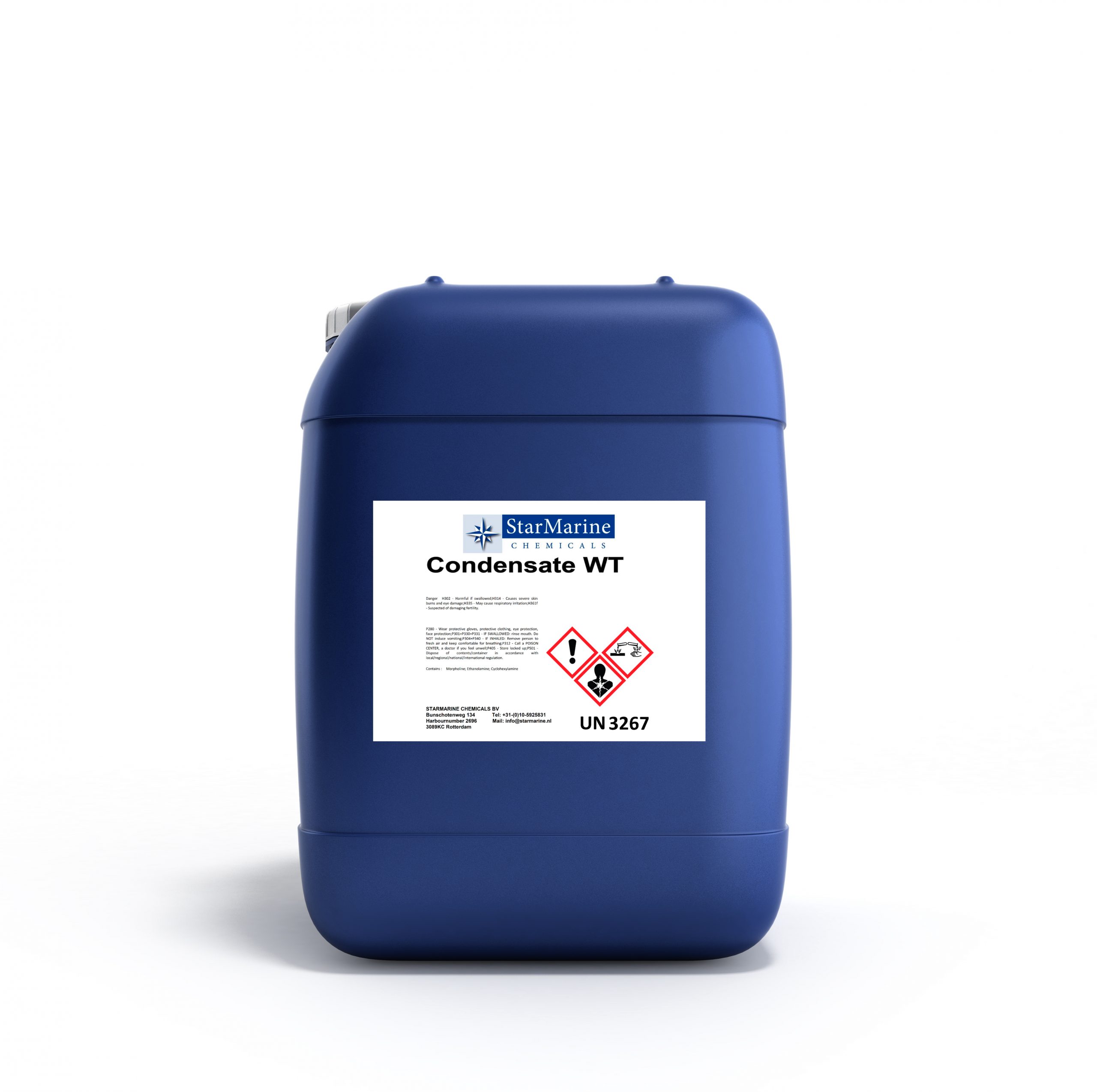Condensate WT
An organic oxygen scavenger and corrosion inhibitor for feed, steam and condensate systems
- One of the five StarMarine Water Treatment Program Products.
- Environmentally safe, non-toxic product.
- Unique single product for control of corrosion throughout the condensate system.
- Simple, accurate testing.
- Effective under all operating conditions.
- Protects boiler surfaces by forming an iron tannate film.
Packing: 25L pail
Additional information
Properties
Brown aqueous solution of neutralized organic acids and amines.
|
Specific gravity (20oC) |
1.0 |
|
Flashpoint PM CC |
none |
|
pH (1% solution) |
10-11 |
Application of use
Condensate WT is dosed at a rate which maintains a pH of 9.0 to 10.0 in the condensate returns. Oxygen entrainment largely depends on hotwell temperatures and if these are maintained at above 80o C the condensate pH range of pH 9.0 to 9.5 is adequate. If hotwell temperature control is erratic and averages less than 80o C, tighter control is necessary and condensate returns should be kept in the range pH 9.5 to 10.0. It is not necessary to carry out oxygen or product residual tests.
Initial dosage
Condensate WT is initially dosed at 0,2 ltr/m3 boiler water. Systems showing signs of corrosion should be dosed at up to .07 ltr/m3 boiler water for the first few days in order to passivate all metal surfaces.
Daily dosage rates
After initial dose, start metering at a minimum of 0.4 ltr/24 hours continuously and adjust to obtain correct condensate pH.
Dosing system
Condensate WT must be dosed continuously in conjunction with Boiler WT in a metering pump/tank unit, discharging directly into the feed system and/or the exhaust gas economizer circulating pump discharge. It must NEVER be slug dosed to a running system via a hotwell or by- pass feeder. For further details on dosing equipment refer to the equipment information sheets.
Safety Aspects
Classification according to Regulation (EC) No. 1272/2008 [CLP]
- Acute toxicity (oral), Category 4 H302
- Skin corrosion/irritation, Category 1B H314
- Reproductive toxicity, Category 2 H361f
- Specific target organ toxicity — Single H335 exposure, Category 3, Respiratory tract irritation


 Download
Download